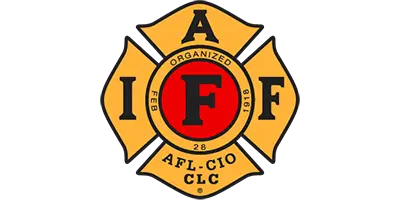Smoke Alarms
Today, you have less time to escape your home in the event of a fire than ever before. A rise in home furnishings using synthetic materials, open-concept floor plans, and other factors have contributed to this reality. In some instances, flashover — the point at which most combustible material in an area ignites near-simultaneously — can occur in less than three minutes.
Properly installed and maintained smoke alarms can alert individuals to the threat of fire, allowing them to leave the structure as quickly as possible. According to the National Fire Protection Association, the death rate per 1,000 home structure fires is 55 percent lower in homes with working smoke alarms.
CFSI supports efforts to embrace smoke alarms conforming to the latest industry standards in a performance-based, technology-neutral manner.
Carbon Monoxide Alarms
Carbon monoxide (CO) poisoning is a proven threat to Americans across the country, claiming at least 430 lives annually. Additionally, approximately 50,000 people are sent to emergency rooms every year due to unintentional poisonings, according to the Centers for Disease Control and Prevention (CDC). Since CO is an odorless, tasteless, and colorless gas, many people are initially unaware they are even being poisoned. Carbon monoxide poisoning can result in death, but it can also cause lifelong neurological and cardiac issues, in addition to other harmful, long-term health conditions. While anyone can be harmed by exposure to CO, it is especially dangerous for babies, children, elderly individuals, and individuals with preexisting chronic health conditions, such as cardiovascular disease, anemia, and respiratory issues. CFSI supports initiatives to promote the installation of carbon monoxide alarms in residential properties and places of public accommodation, and to educate the public about the dangers of carbon monoxide and the need for carbon monoxide alarms.


Fuel Container Safety
The National Fire Protection Association (NFPA) estimates that in 2021, fire departments responded to more than 433,000 hazardous materials incidents. These incidents caused injuries and deaths for civilians and first responders alike. Flame mitigation devices on consumer-grade portable fuel containers can help prevent “flame jetting” or “flashback” to the fuels and vapors within the container and help prevent burn injuries and fatalities. That is why CFSI supports efforts to ensure that the transportation of hazardous materials is as safe as possible for citizens and first responders.
Hazmat Training
CFSI supports Assistance for Local Emergency Response Training (ALERT) grants, which provide hazmat training for volunteer or remote emergency responders. The program is run by the Pipeline and Hazardous Materials Safety Administration.
CFSI has advocated for the authorization and funding for these vital grants.
Past Legislation
The legislation establishes a federal grant program to assist states in carrying out carbon monoxide detector installation and education programs.
- Carbon monoxide (CO) is an odorless, colorless gas that is produced whenever fossil fuels are burned.
- According to the Centers for Disease Control and Prevention, there are more than 400 deaths and tens of thousands of emergency room visits caused by CO poisoning every year.
- CO poisoning can also cause harmful, long-term health conditions, including lifelong neurological and cardiac issues.
- While anyone can be harmed by exposure to CO, it is especially dangerous for babies, children, pregnant women, the elderly, and individuals with preexisting chronic health conditions.
Became P.L.117-103 on March 15, 2022.
The legislation would require the installation of qualifying smoke alarms in federally-assisted housing.
- Every year there are more than 300,000 residential fires in the U.S.
- Today, fires burn faster and hotter than ever before due to synthetic materials, open-concept floor plans, and more.
- Properly installed and maintained smoke alarms are critical to preventing fire fatalities in homes across America, including federally funded homes.
Became law as part of P.L.117-328.
This bill protects consumers by directing the Consumer Product Safety Commission to create a standard requiring certain flame mitigation devices be used on portable fuel containers.
- Flame mitigation devices on consumer-grade portable fuel containers can help prevent “flame jetting” or “flashback” to the fuels and vapors within the container and help prevent burn injuries and fatalities.
Became law as part of P.L.116-260.
The legislation would authorize DOT’s PHMSA to provide grant funding pertaining to training focusing on incident response activities related to the transportation of crude oil, ethanol, and other flammable liquids by rail.
- Training in hazmat response is vital to ensure that first responders are able to properly respond to related incidents.
Became law as part of P.L.114-113.











